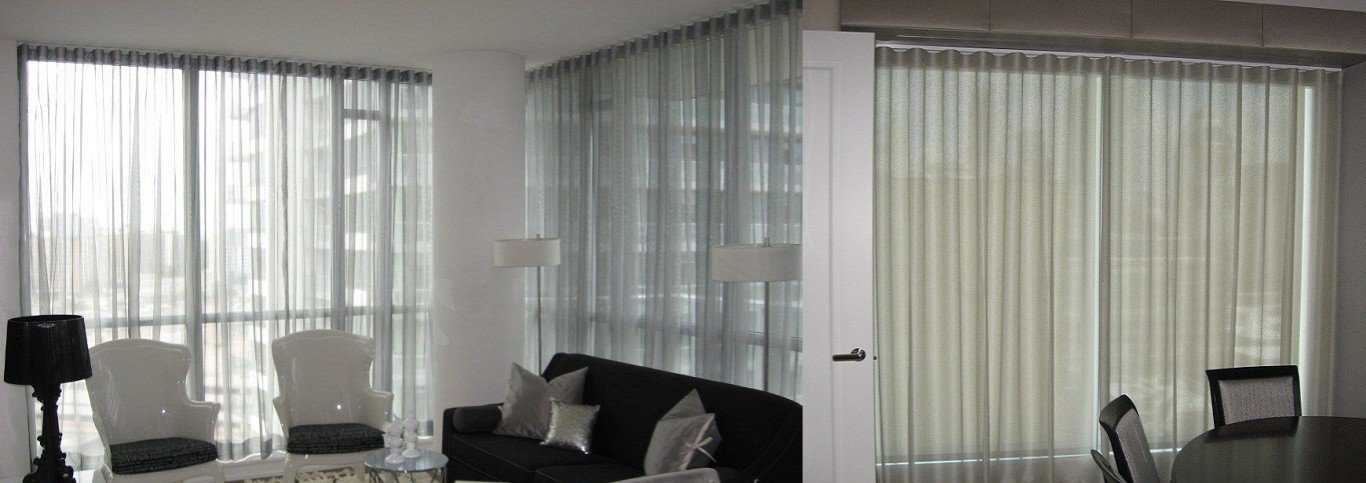
Curtains, blinds, drapes, valances, shades and shutters—how do you differentiate them? How do you decide what to buy?
Windows are among one of the first things people notice in anyone’s home. Window treatments have a way of creating an ambience, enhancing your style. Most treatments can be classified as either shades or blinds. Shades can be lowered or raised using a cording system or a spring component. Blinds are a type of hard window treatment made of movable slats which are tilted open or closed when the blinds are lowered. Both shades and blinds can be used since these two compose the largest category of window covering treatments.
Wood blinds can suit most rooms. They’re simple natural wooden slats which are either stained or painted. They’re a classic treatment which complements many decorative styles. Their extremely simple construction makes them easy to operate. There are several finishes available ranging between light bamboo to rich ebony. The slat sizes differ depending on the degree of control you prefer regarding the light control and privacy.
These blinds provide an uncomplicated look for the best value. They are efficient, attractive, affordable and very easy to maintain. They look and feel like real wood but are much less expensive and extremely durable. They’re a great option for places with high moisture or humidity as they won’t fade or warp.
They’re vibrant as an architectural statement. They can add value to your home while also being functional. Shutters help control the incoming light flow while offering privacy when closed. It also provides insulation against heat, sound and cold. Shutters add a traditional and timeless sophistication to any room they are installed in.
These are perhaps the lowest cost window treatment option available. They’re basic blinds so they provide and control privacy with just the twist of a wand. They’re available in a wide variety of colours, materials and thicknesses. Although mini-blinds offer minimal treatment, they still solve all light issues.
They’re the most decorative treatment for windows. The terms are usually used interchangeably as full-length sheets of fabric. Drapes add personality to a space. They can transform a room completely. Though decorative, they can block or filter light and can be lined to provide thermal insulation. Since they’re hung high near the ceiling and draped close to the outer edges of the window, they can make the windows and the room feel larger. An insulating cellular shade or a wood blind can be the perfect companion for the drapes.
They’re the best two for one treatment available on the market. You get the look and feel of fabric while getting the functionality of blinds. Sheer shades are elegant, airy and light. The vanes can be tilted open providing a filtered view or be kept closed providing privacy. They can also be raised for a full view of the scenery outside as well. Sheer shades with a room-darkening fabric ensure you get a good night’s sleep.
Valances offer an additional layer of decoration. They’re soft fabric treatments fitted at the top part of the window. They’re purely decorative and don’t cover more than the upper third of the window. It can either be a simple band of fabric or a mass of folds and pleats. They’re meant to keep the eye focused upward and helps soften the look of the hard edges of the frame.
There are many different types of window treatments available in the market. Choose one which best suits you and your family’s needs.